Steemit Crypto Academy Contest / S17W3 : Onchain Metrics of Steem blockchain.
22 comments
Hello and welcome to my blog. I hope your all hail and hearty and enjoying this engagement challange. Today I am writing a task set by steemit cryptoacademy which is about on-chain matrics.
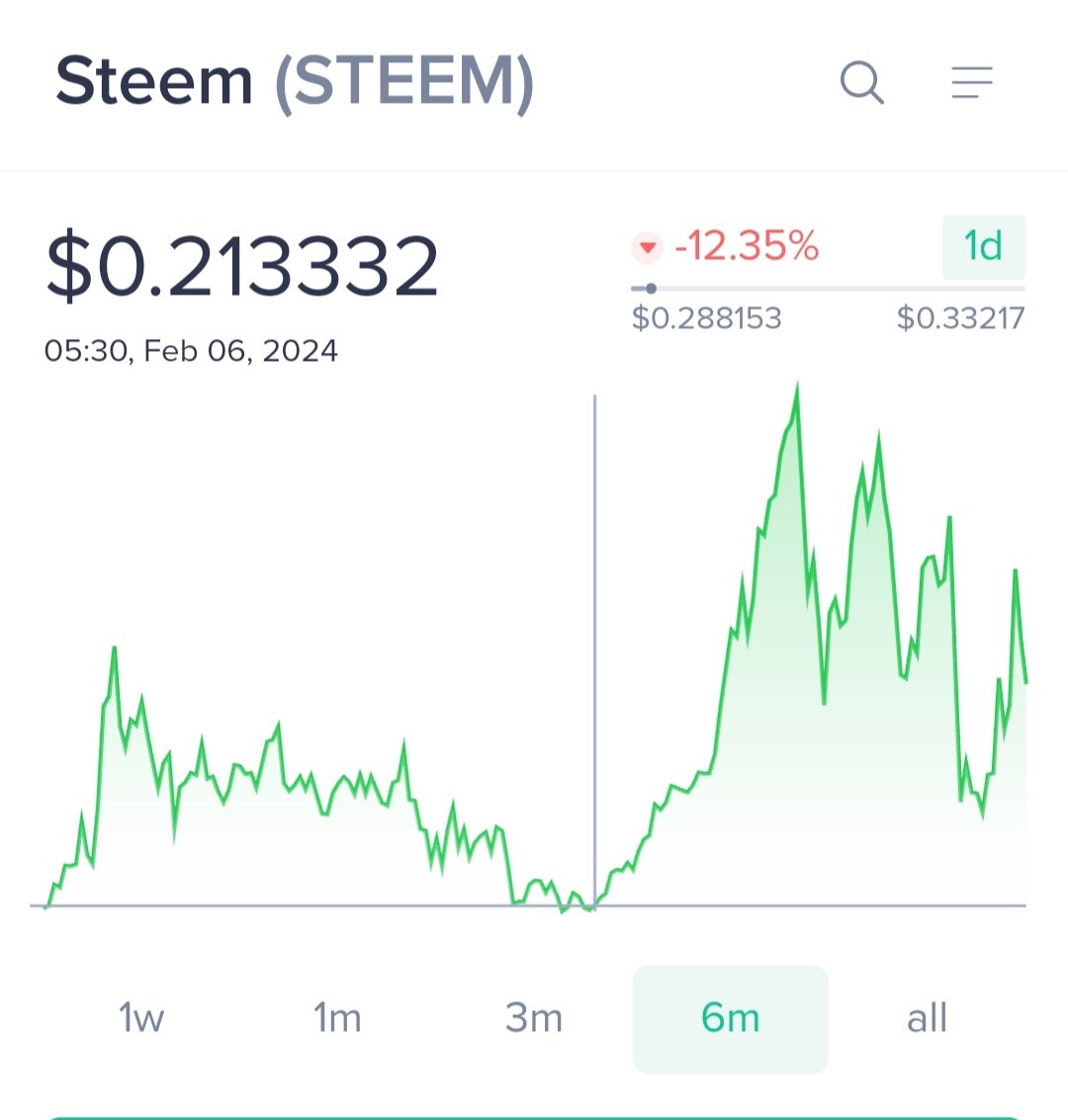

What are the main Onchain Metrics indicators used to evaluate user activity on the Steem blockchain, and how can they be explained in terms of their significance?

Blockchain is a decentralized public ledger that stores data after validation and verification, making it immutable, non-editable, tamper-proof, and publicly accessible for verification and transparency. The properties of stored data can be utilized for determining on-chain metrics by traders and investors to gain insight into the integrity of the blockchain in general and the fundamentals of the underlying asset.
For example, on-chain metrics of the Steem blockchain can be used to determine and understand the integrity of the Steem blockchain, which will, in turn, aid in understanding the future of the Steem token. Various indicators can be used to evaluate user activity on the Steem blockchain. For example:
- Number of Active Addresses
- Number of Transactions
- Age of a Coin
- Exchange Inflow and Outflow
- Voting Patterns
- Account Creation Rate
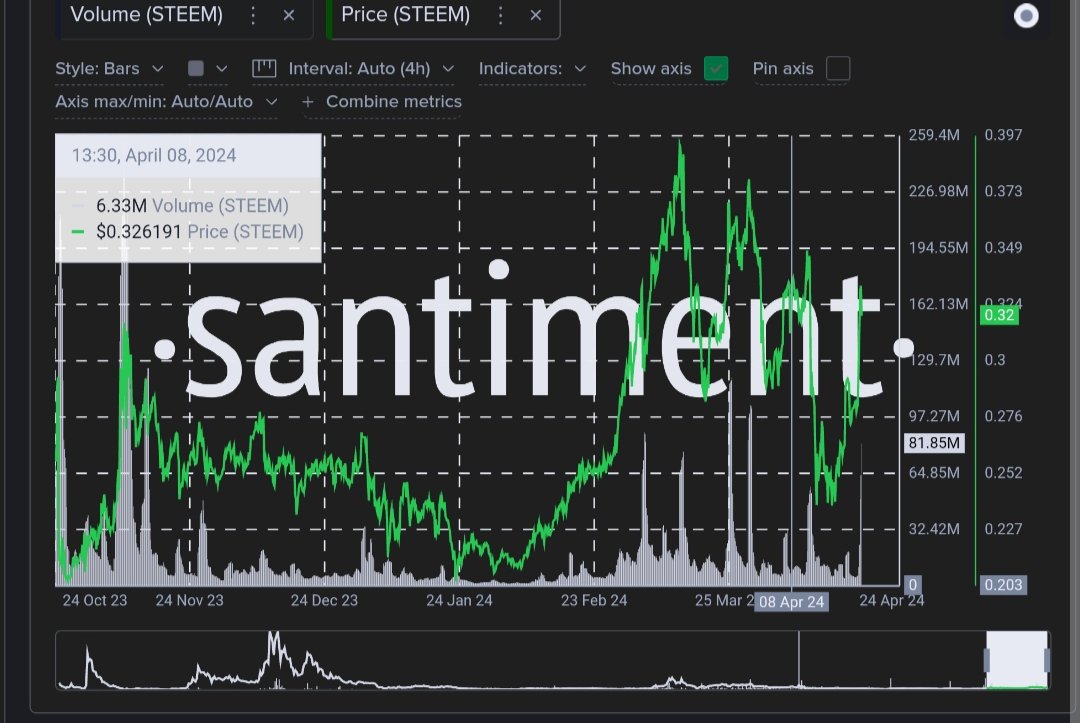
source Price-Time and Volume-Time (a transaction) graph of Steem
The number of active addresses and the number of transactions are the two most important on-chain metrics that can be used to determine user activity. The number of active addresses on Steem indicates the approximate number of individuals who are actively engaged in performing transactions on the Steem blockchain. The greater the number of active addresses and transactions, the higher is the number of active users, indicating greater adoption of the Steem blockchain by users. To further delve into this metric, one can analyze daily active addresses, weekly active addresses, yearly active addresses, etc.
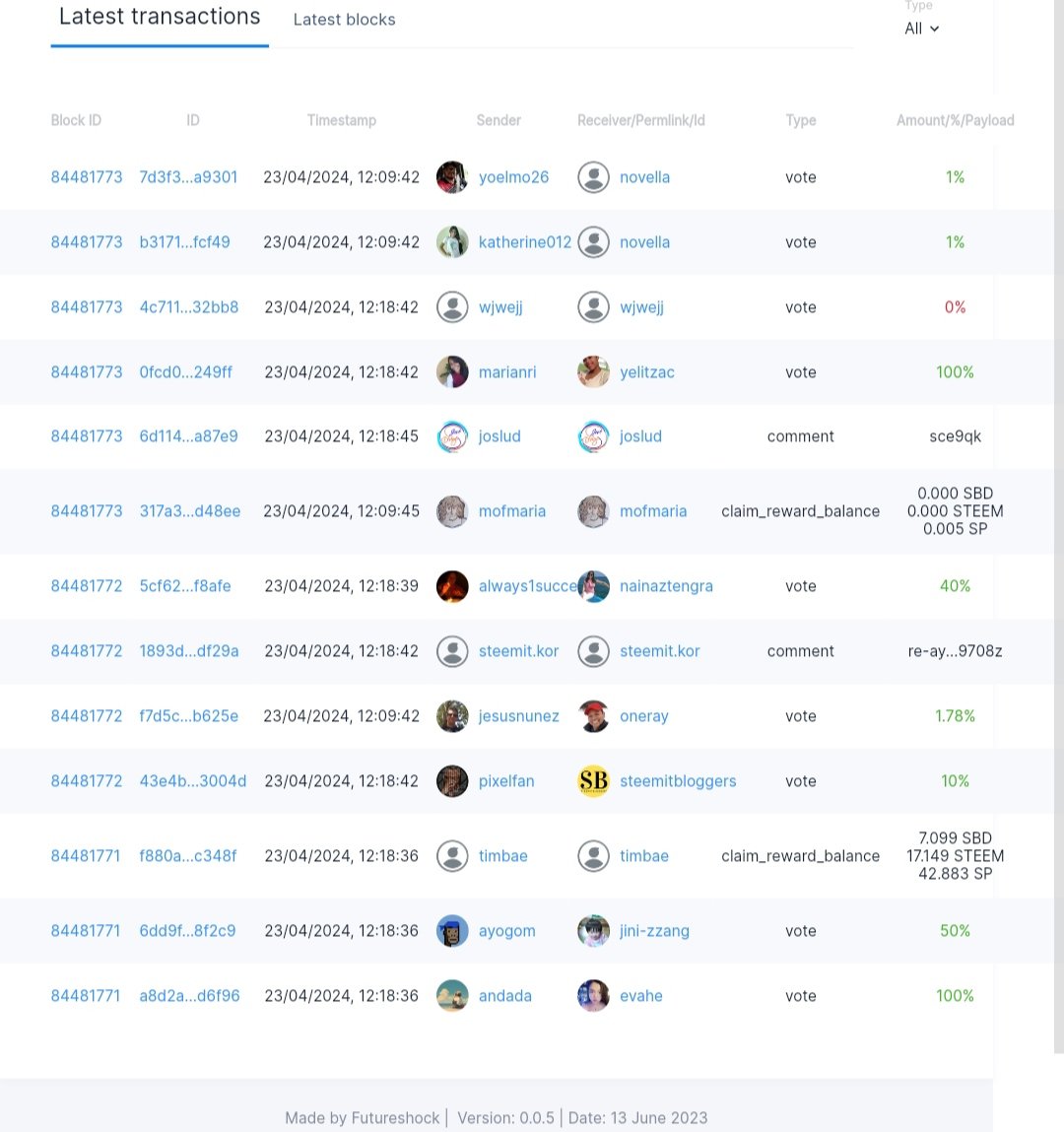
Source
Latest transactions
The age of a Steem token refers to the time for which a token remains in a particular address without movement. It is important to emphasize that the age of a coin must not be confused with the time since the minting of a token has taken place. If the age of a coin in an otherwise active address is high, it indicates that users are holding the coin, reflecting their faith in the future of the coin and therefore serving as a positive indicator.
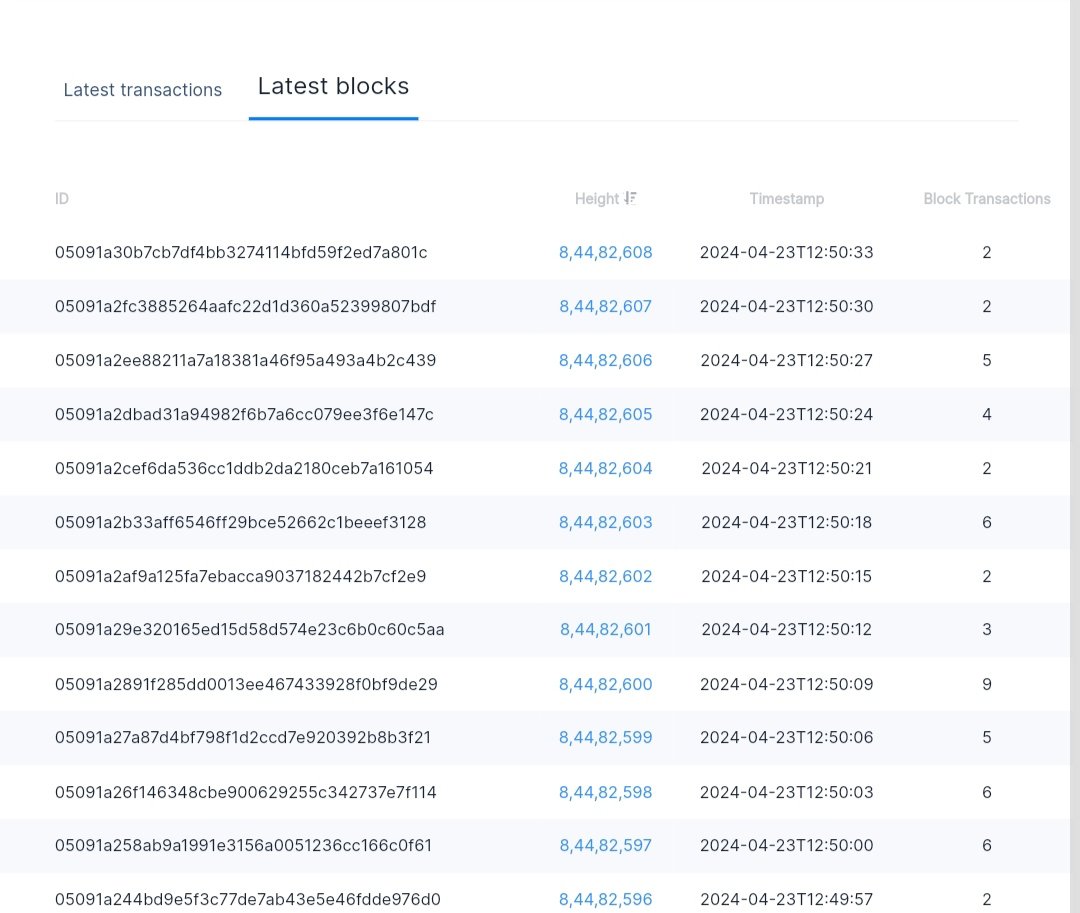
Source
Latest blocks
Exchange inflow and outflow reflect the intentions of users. An increase in inflow into central exchanges indicates that users are moving assets onto the exchange with the intention of selling or performing a trade. Conversely, if the outflow from an exchange to wallets increases, it indicates that users are intending to hold the token in their wallets, reflecting positive sentiment among cryptocurrency enthusiasts.
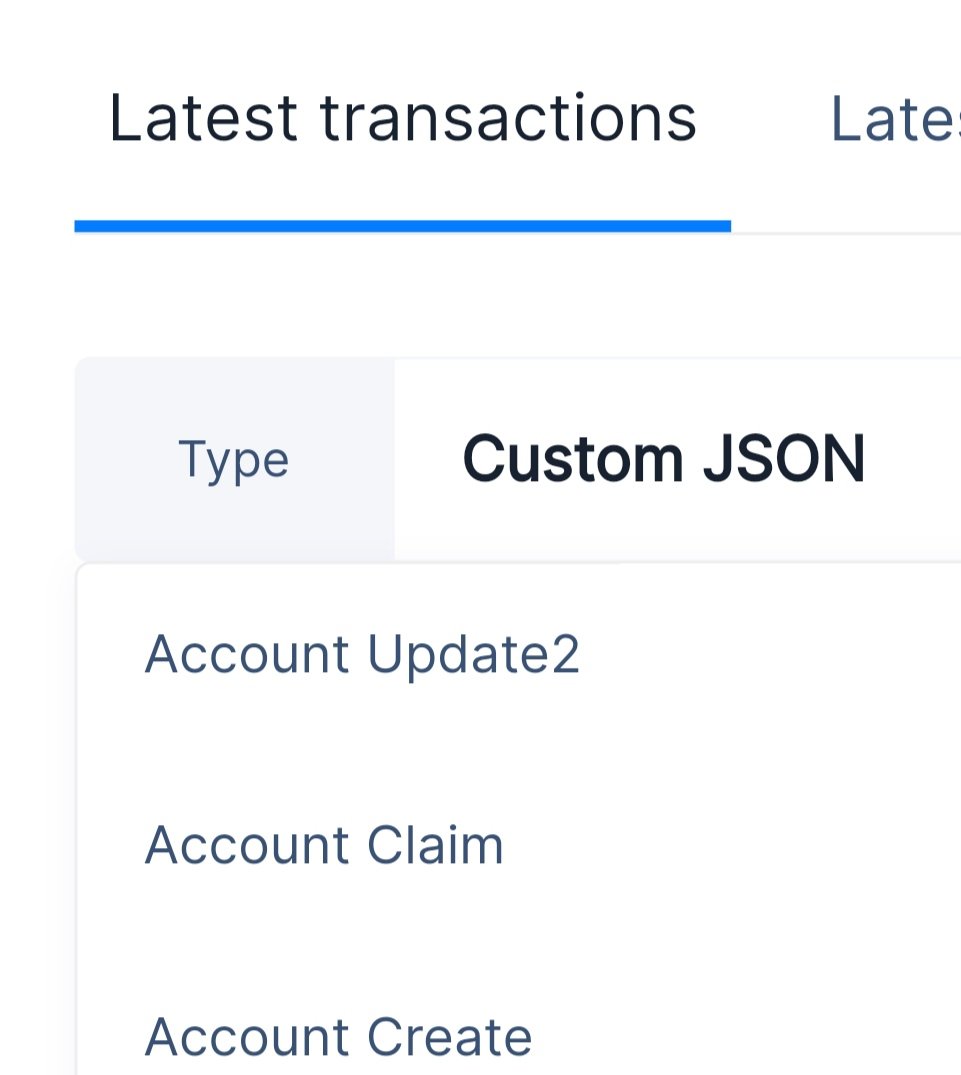
Source
Other options to explore
The rate at which new accounts are created on the Steem blockchain reflects user interest. An increase in the rate of new account creation reflects increased interest, while an increase in the dormancy of old accounts reflects a decrease in user interest. In the past, we have observed that with an appreciation in the price of Steem, the rate of new account creation increases, reflecting increased user adoption.

How can Onchain Metrics data from the Steem blockchain be analyzed to understand user engagement trends and community evolution over time?

On-chain metrics data can provide a tremendous amount of useful information about a blockchain. Those familiar with the trading world know that various types of analysis, such as fundamental analysis, technical analysis, sentimental analysis, and data analysis, can be utilized.
On-chain metrics are a component of data analysis which provides useful insight about the fundamentals of a token under consideration and also determine the sentiment of data analysis over the short term.
If the number of active addresses and number of transactions increase over a period of time, it indicates an increase in user engagement. If historical data of the Steem blockchains shows an increase in the number of addresses and transactions over time, it is the key to understanding the increase in user engagement and therefore the development of the blockchain over time.
Speaking of data on the Steem blockchain, an important metric known as "age of a coin" and graphically represented by a HODL wave, is indicative of sentiment and faith of users. If the active addresses of the users have coins with age in years, it indicates that those users have faith in the future of the token and are holding the token with bullish intention. So, with the increase in the age of coins, positive sentiment of the community is evident.
Another indicator is the network value ratio (NVT ratio) which reflects whether the token is undervalued or overvalued.
NVT = Network Value to Transaction Ratio = Daily Market Cap / Daily Transaction Volume of the asset, recorded on-chain.
A higher NVT ratio indicates an overvalued asset and therefore is perceived as a sell signal. On the contrary, a lower NVT value indicates an undervalued asset and perceived buy signal. Sell signal is indicative of negative sentiment, while a buy signal indicates positive sentiment.
Voting patterns on the Steem blockchain can help in analyzing user engagement. Voting behavior of users can help in understanding the community's preference for the content, which in turn determines user engagement and interest in particular content. An increase in voting metrics indicates an increase in user engagement.
Similarly, the power-up and power-down metrics of Steem blockchain can help in understanding the evolution and engagement of users. An increase in power-up matrics on Steem reflects positive evolution of users, whereas power-down is indicative of decreased user engagement and interest, and therefore a negative indicator in the evolution of Steem blockchain.

What are the specific challenges of interpreting Onchain Metrics on the Steem blockchain, considering its unique social structure and incentives?

Some specific challenges of interpreting Onchain Metrics on the Steem blockchain, considering its unique social structures and incentives, are as follows:
Sybil Attack
Sybil attacks pose significance threat in interpreting the on-chain metrics on the Steem blockchain by inflating the data. Sybil attack refers to the creation of multiple fake accounts by users with the intent of exaggerated reward harvesting. By creating multiple fake accounts, they increase the daily active users (DAU) and account creation rates, giving a false perception of increased real users and widespread community adoption.
It is important to mention that the Steem blockchain has adopted various measures to counter Sybil attacks like identity verification and other sophisticated algorithms like reputation systems. Network analysis is another measure in place to check Sybil attacks, involving network analysis of suspicious behaviors. By analyzing transactional data, coordinated activities, and user interactions, developers can keep a check on these attacks.
Whales and Power Dynamics
Whales refer to users with a large stake of native cryptocurrency of the Steem blockchain and therefore significant voting power. They have the potential to alter the reward dynamic by altering reward distribution and fairness. The concentration of voting powers creates inequality in the ecosystem because the interests, efforts, and preferences of small stakeholders are marginalized.
The Proof of Brain algorithm, which forms the core of the ecosystem on the Steem blockchain, is lynched by voting power concentration in the hands of whales because their votes make posts trend in the community irrespective of the quality of the content. Their activities also give a perception of favoritism and unfair reward distribution, decreasing user interest and adoption.
Content Manipulation
Content manipulation is a growing challenge in interpreting metrics on-chain in blockchain. It is carried out through mischievous activities like the use of bid bots and vote buying. These activities alter metrics like reward distribution, voting behavior, and transaction volume. Practically, such content harms the integrity of the blockchain because the quality of the content is immaterial. The fairness and transparency of the rewards distribution are manipulated by content manipulation through the above activities. Voting power represents the influence of a user within the community. The more the voting power conferred to the user because of the staked Steem power, the more is the influence of that user within the community and the platform. The distribution of voting power is therefore an important parameter to gauge the health of the ecosystem. If the voting power is fairly distributed without concentration in few hands, it provides an equal opportunity for all the participants of the ecosystem to grow. On the contrary, concentration of voting power in few hands raises concern about the decentralization of the ecosystem and decision-making power. One important index that is used in day today economic pursuits off chain by nations is the Gini Index, which is used to detect the disproportionate distribution of assets or wealth. The higher values of the Gini coefficient indicate more unfair wealth distribution in a community, while lower values indicate more equitable distribution. A similar concept applies to the Steem blockchain. Concentration of voting power in few hands disrupts the sanctity and spirit of the ecosystem because decision-making power of the community is shifted from its decentralized model to a centralized one. The content quality and diversity are least paid attention to because it is the voting power of those whales which determines the trending content and its recognition by the community. The more diverse the content on the Steem blockchain, the healthier is the ecosystem. Diversity of quality content reflects that users from different walks of life have assembled on the platform and are ready to give their best to maintain the quality of the content and therefore the health of the ecosystem. The diversity and quality of the content are important to uphold the spirit of the Proof of Brain algorithm which lies at the heart of the ecosystem. On-chain metrics can be used to analyze the reward distribution on the platform. Fairness of reward distribution is important to maintain and establish trust in the community. In addition, fairness of rewards also fosters community adoption. Manipulation of reward distribution decreases the interest of existing users as they perceive it as devaluation of their quality time and efforts. Reward distribution is manipulated by some users through the use of bid bots, buying votes, Sybil attacks, content farming, etc. Each of these activities is detrimental to the health of the Steem ecosystem as they discourage existing users and are perceived as unfair reward distribution. Developers of the Steem blockchain have a crucial role in utilizing on-chain metrics to enhance platform usability, drive adoption, and address scalability issues while upholding community integrity. Let me discuss how developers can do so: Platform usability refers to the user experience. It is the perception of users after using a platform,whether they feel happy, bored, or engaged, and whether they perceive the environment as conducive to growth or toxic. It is the responsibility of developers to make use of on-chain metrics like user satisfaction, user retention rate, time spent, curation rewards, staked Steem power, and user activity to enhance the platform usability. Adoption drive refers to efforts to engage new users and retain existing ones on the platform. On-chain metrics offer insights to developers about the sentiment of users and the community towards the platform. Metrics like new account creation rates and daily active users can be used by developers to tailor their marketing efforts. Scalability of any blockchain is important for enhancing transaction throughput and platform usability. Developers can gain insight from on-chain metrics like transaction volume, number of active addresses, resource utilization, and network performance. This feedback can be utilized for coming up with new solutions to address scalability issues. We have seen other blockchains adopting solutions like sharding, sidechains, and protocol upgrades to address scalability. Addressing these challenges while upholding community integrity is essential for the long-term success of the Steem blockchain. By leveraging on-chain metrics effectively, developers can make informed decisions to enhance platform usability, drive adoption, and address scalability issues, while maintaining the trust and integrity of the community.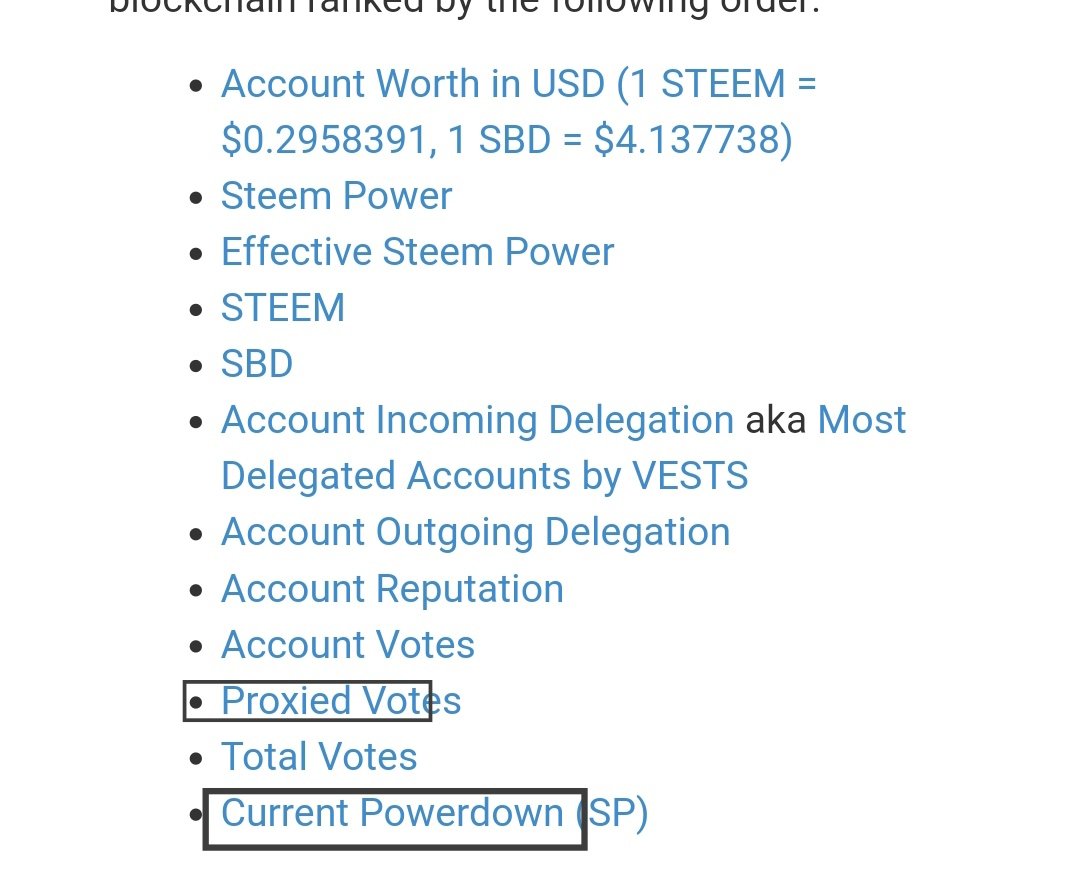
Source Proxied votes cannbe checked from steemyy

How can Onchain Metrics of the Steem blockchain be used to assess the health of its ecosystem, including aspects such as the distribution of voting powers, content diversity, and reward fairness?


How can Steem blockchain developers utilize Onchain Metrics to enhance platform usability, drive adoption, and address scalability issues while upholding community integrity?

Thanks
Comments